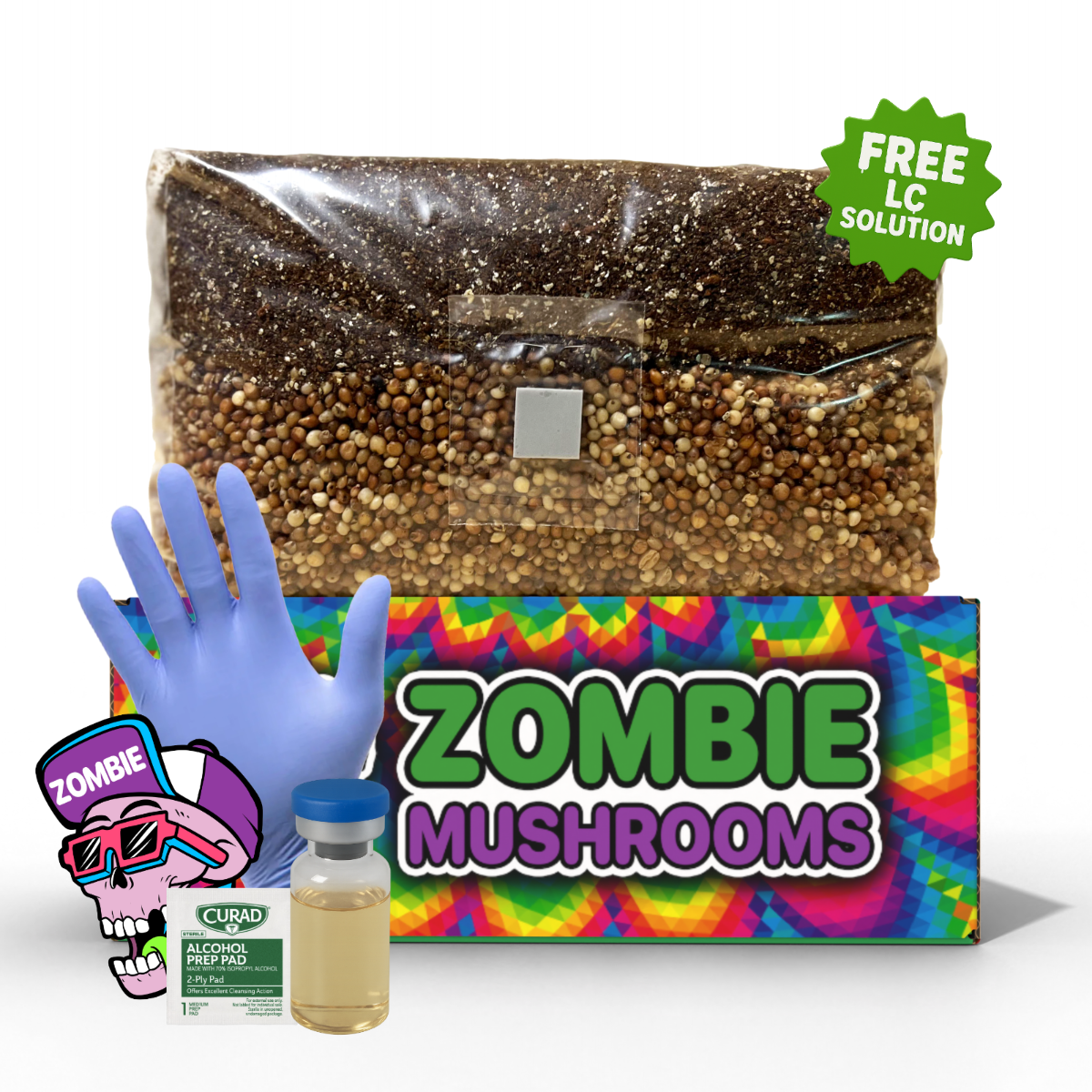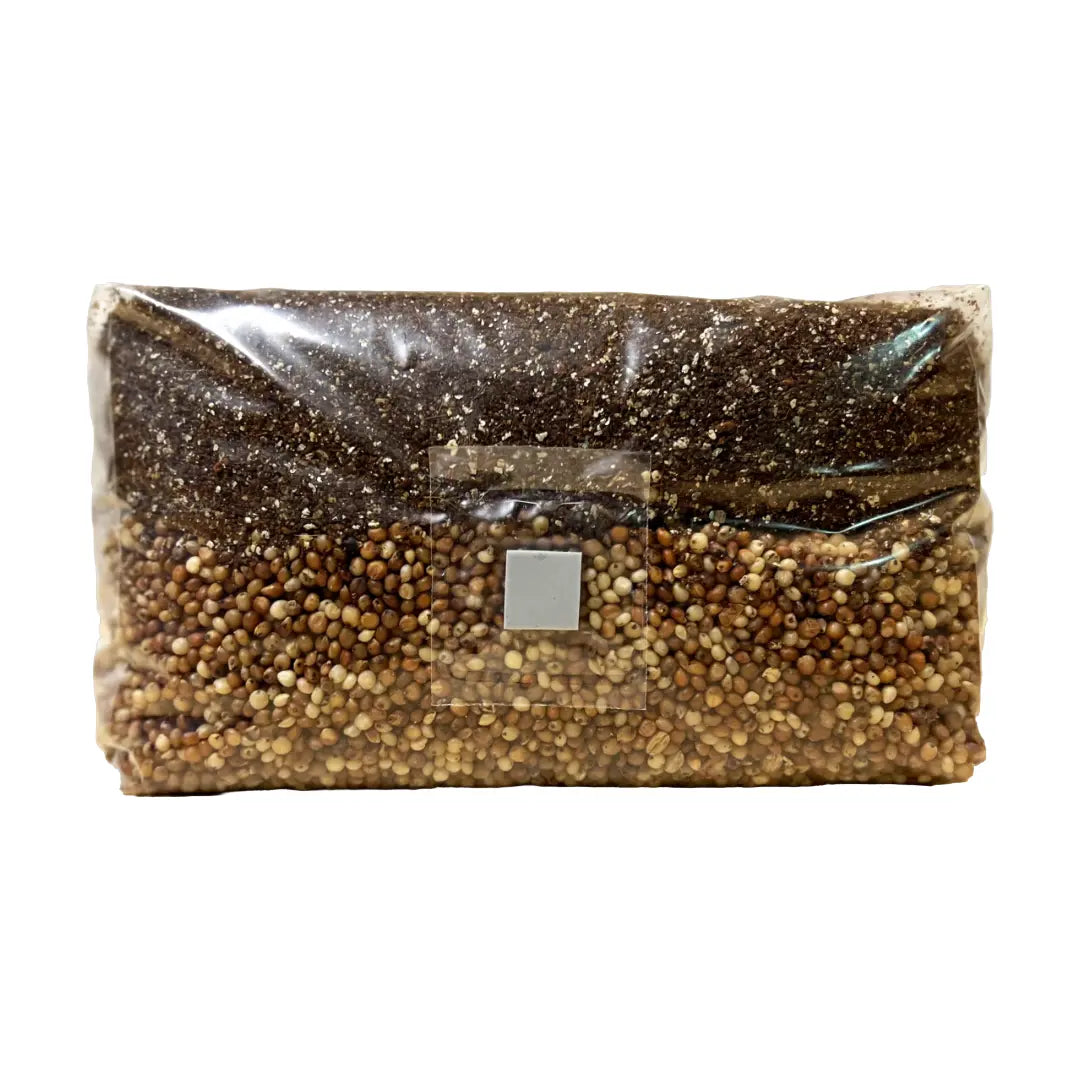⬇️ Prefer to listen instead? ⬇️

- Global mushroom production exceeds 10 million metric tons annually, reflecting rising demand and farming profitability.
- Mycelium colonization can fail within days if contamination isn't controlled with strict sanitation practices.
- Oyster mushrooms can reduce household CO₂ levels thanks to their air-purifying properties during fruiting.
- Studies show improper substrate sterilization accounts for up to 40% of failed mushroom cultivations.
- FAO highlights mushrooms as a sustainable protein source with low environmental impact.

Mushroom Grower Life: What’s It Really Like?
Mushroom farming combines science, art, and a unique connection to nature. Whether pursued as a career, side hustle, or hobby, the lifestyle of a mushroom grower involves sterilization, observation, and constant adaptation. Unlike traditional soil-based agriculture, growing mushrooms happens in hygienic micro-environments, where success depends on precision, patience, and a little fungal wisdom. For anyone looking to begin, our grow bags offer a clean, convenient way to create that environment at home, making mushroom cultivation simpler and more accessible.

Morning Routine: Clean Hands, Clean Rooms
The day starts with sterility—non-negotiable in mushroom farming. Contamination is the mushroom grower’s most persistent threat and avoiding it takes discipline. Growers wear lab gloves, face masks, and in many cases, full lab suits. All contact surfaces, including scalpel handles, countertops, shelving units, and tools, are wiped down with isopropyl alcohol (usually 70%).
HEPA-filtered air systems or laminar flow hoods are turned on to clear airborne particulates and biological contaminants. Even shoes and clothing are sanitized or changed to avoid tracking microbes into the grow area. These steps form the cornerstone of every successful mushroom farm, ensuring pristine conditions for the delicate fungi that thrive only in sterile environments.
For small-scale or home mushroom growers, this routine might happen in a basic glove box or a modified plastic tote—but the philosophy remains the same: Clean grow rooms equal healthy mushrooms.

Checking the Colonization Progress
The moment the spores or mycelium are introduced to a substrate, a biological clock starts ticking. This early phase is called colonization, and it's as critical as it is fragile.
Each morning, a mushroom grower inspects their grain spawn jars and substrate blocks. They're on the lookout for:
- Healthy white mycelium growth spreading evenly.
- Signs of contamination: green, black, or orange spots suggest mold, while foul smells hint at bacterial infection.
- Condensation levels in containers, which if too high, could mean excess moisture—a contamination risk.
- Temperature fluctuations that could slow or halt mycelial colonization.
Growers often use digital temperature and humidity monitors with memory functions to track even small shifts overnight. Colonization can take anywhere from 10 to 21 days depending on the species and conditions. During this time, mushroom farmers make log entries daily, tracking progress, adjusting parameters, and noting any anomalies.
This level of monitoring supports both troubleshooting and refinement. Some professional mushroom farmers even automate the data process using environmental control boards connected to farm management apps.

Harvesting: The Peak of a Grower’s Day
Harvest time is the emotional and economic peak of a mushroom grower’s cycle. After weeks of preparation and waiting, the fruiting bodies emerge—sometimes overnight—ready for a precise harvest window.
Different mushroom species offer distinct harvest cues:
- Lion's mane: harvested when the spines begin to elongate but before they yellow.
- Oyster mushrooms: harvested when the cap edges start to flatten out.
- Shiitakes: harvested as the cap just begins to open, but before full flattening.
Cutting tools—knives, scalpels, or scissors—must be sterilized before use. Mushrooms are gently removed from the substrate to minimize stress or damage to the remaining mycelium, especially important when using "flush" systems that produce multiple harvests from a single block.
The mushrooms are then placed in breathable baskets or perforated containers to prevent moisture build-up, which can cause rot. Time is critical; freshly picked mushrooms retain peak flavor and nutrients for only a few days. Many farmers aim to sell within 24 to 48 hours of harvest.

Substrate Preparation and Sterilization
Substrate is to mushrooms what soil is to plants—a rich source of nutrients that helps growth throughout the life cycle. The right substrate can speed up growth, but a poor one might stop development or bring in contamination.
Common substrates include:
- Straw (pasteurized)
- Sawdust (usually hardwood, supplemented with bran)
- Coco coir and vermiculite (DIY-friendly)
- Coffee grounds, paper waste, and other recycled organics (sustainability bonus but higher contamination risk)
Once chosen and prepared (chopped, mixed, hydrated), the substrate must be sterilized. This sterilization is critical to wipe out all potential competitors—fungi and bacteria that could outcompete the desired mushroom species.
Sterilization can be achieved via:
- Pressure cookers or autoclaves: reaching 15 PSI at 121°C for 90 to 120 minutes.
- Pasteurization: submerging straw in hot water (160°F/71°C) for 1 to 2 hours—less effective but lower-tech.
- Chemical sterilization: using lime or hydrogen peroxide—less common in professional grows.
Failure to sterilize properly is a leading cause of crop failure and economic loss among mushroom growers, especially in urban or small-scale farming operations.

Inoculation: Introducing the Mycelium
Inoculation is the intimate act of introducing life into a sterile environment. This step marks the beginning of transformation—from an inert substrate to a living, breathing fungal ecosystem.
Precision and cleanliness remain very important here:
- Liquid culture syringes are injected into holes in sealed substrate bags.
- Grain-to-grain transfers occur in sterile conditions using alcohol-flamed tools.
- Agar wedges are placed into new media inside Petri dishes or sterilized jars.
Sterile equipment, steady hands, and minimized air movement protect the delicate process. Some mushroom growers conduct inoculations in fully enclosed glove boxes, while commercial growers use laminar flow hoods that deliver sterile air across the workspace.
Each inoculated item is then sealed, labeled (with date, strain, and lot), and stored in a colonization chamber or incubation room. For a beginner, this process may feel like a lab experiment—but mastering it is key to becoming a confident mushroom grower.

Environmental Control: Creating the Fungi Haven
Post-inoculation, attention shifts to the cultivation space—an area requiring carefully tuned environmental variables. Different mushroom species demand specific climates to initiate 'fruiting'—the formation of actual mushrooms.
Key parameters include:
- Humidity: Most mushrooms require 85–95% for optimal fruiting.
- Temperature: Oyster mushrooms thrive between 60–75°F; shiitake prefers 50–70°F.
- Fresh Air Exchange (FAE): High CO₂ levels can cause long stems and small caps.
- Light Exposure: Indirect light simulates the mushroom’s natural forest floor habitat.
To support these conditions, mushroom growers install:
- Cool mist and ultrasonic humidifiers.
- Exhaust fans controlled by CO₂ monitors.
- Light timers ensuring 12/12 light cycles.
- Tents or grow boxes to compartmentalize species-specific environments.
Environmental control turns your space into a personalized ecosystem—where biological feedback loops, such as fruit growth or stalling, help fine-tune the settings. High-tech grow rooms even include IoT devices that adjust variables in real time.
Documentation and Data Tracking
To become a truly skilled mushroom farmer, you need more than instinct—you need data. From colonization times to average yields, all stages benefit from rigorous tracking.
Growers commonly log:
- Temperature and humidity trends
- Harvest weights and dates
- Substrate recipes and sterilization times
- Contamination incidents
- Strain behavior across growing cycles
Some use physical notebooks, but digital growers prefer apps like MushTracker, Excel, or Notion. Commercial-scale mushroom farms integrate full sensor systems and AI tools to constantly record and predict optimal conditions—a cutting-edge advancement in modern mycology.
Over time, these records reveal actionable patterns. For instance, you might learn that your pink oyster mushrooms fruit best 3 days earlier in the south-facing room. This kind of insight turns hobbyists into expert mushroom growers.
Mid-Day Clean-Up and Equipment Sterilization
At the halfway point of the day, the mushroom farmer circles back to sanitation—wiping down surfaces, cleaning tools, and discarding or composting used substrate blocks (called “spent blocks”).
This period also involves:
- Inspecting fruiting beds for rot or pests
- HEPA filter maintenance
- Refilling humidity tanks and cleaning nozzles
- Replacing gloves and sanitizing personal protective equipment (PPE)
Despite the repetition, these routines ensure a low-spore, low-mold environment—especially critical when working with multiple species or overlapping harvest cycles. Many growers operate on a 2 to 3 flush system, meaning spent substrates are cleared out on a rotating schedule to make room for new ones.

Troubleshooting: When Things Go Wrong
Even expert mushroom growers face setbacks. Recognizing early signs of failure is crucial for recovery.
Common issues include:
- Trichoderma mold (green mold): fast-growing invader; treat by removing contaminated material and decontaminating the area.
- Bacterial wet spots: look oily and smell foul; caused by excess moisture—improve drainage or reduce misting.
- Slow colonization: too cold, dry, or compact substrates.
- Fruiting failures: due to poor fresh air exchange or wrong humidity.
Every failure teaches. Some growers keep a “failure log” to extract patterns and avoid recurring errors later. Think of it as a mycological autopsy—painful, but educational.
Evening Routines: Planning for Tomorrow
As the day winds down, the task list shifts back to preparation.
Evenings are often spent:
- Labeling new culture jars
- Mixing new grain spawn
- Organizing Petri dishes
- Planning species rotations based on market demand
- Sterilizing or resetting equipment for morning tasks
The secret to growing mushrooms successfully is consistency—and that means always planning several days ahead. For commercial mushroom growers with staggered harvests and multiple grow rooms, forward planning is vital to ensure continuous yields.

Connecting with the Mushroom Community
Though growing mushrooms is often a solitary venture, mushroom farmers frequently lean into community support for both camaraderie and knowledge exchange.
Popular online communities include:
- r/MushroomGrowers on Reddit
- The FreshCap Mushroom Grower Academy (forums)
- Discord servers dedicated to mycology
- YouTube channels like Mossy Creek and Willie’s Mushroom Lab
These communities help both hobbyists and professionals stay on top of trends, troubleshoot issues faster, trade spores, and compare growing techniques. They are digital mycelial networks—perfectly fitting for mushroom enthusiasts.

Why Grow Mushrooms? The Joy and Purpose
Beyond food and profit, growing mushrooms offers a deeply satisfying lifestyle. Watching mycelium colonize and fruit is like witnessing life in slow motion—a mindfulness practice backed by nature.
As a sustainable agricultural crop, mushrooms require:
- Minimal space
- Low water usage
- No chemical fertilizers
- The ability to grow on waste materials
For health-conscious farmers, functional mushrooms like reishi, cordyceps, or turkey tail also offer medicinal benefits—antioxidants, beta-glucans, and potential anti-inflammatory properties FAO, 2017.
It's no wonder a growing number of people are turning to mushrooms as a future-forward food source.

Tips for Aspiring Growers
Thinking of trying it yourself? Here are beginner-friendly steps:
- Start with a grow kit: Kits from companies like Zombie Mushrooms come pre-sterilized and reduce early mistakes.
- Choose beginner strains: Oyster mushrooms are forgiving and fast-growing.
- Cleanliness is key: Sterilize everything—more than you think you should.
- Keep a log: Tracking environmental conditions helps you learn fast.
- Don’t fear failure: Mistakes are your mycelial mentors.
Once you gain fluency in these basics, scaling up into grains, agar work, or even outdoor log farming becomes feasible.
Becoming a mushroom grower reshapes your relationship with nature, food, and patience. With rising awareness about functional foods, carbon-efficient agriculture, and local food movements, growing mushrooms doesn’t just cultivate fungi—it cultivates resilience and hope.
Want to experience the satisfaction of nurturing your own fungal forest? Look at beginner tools, spore syringes, and farm-grade equipment at Zombie Mushrooms. It’s a rewarding process, one flush at a time.
Citations
- U.S. Department of Agriculture. (2022). Mushrooms: 2022 Summary. https://downloads.usda.library.cornell.edu/usda-esmis/files/rv042t13c/p5548v76n/n296xk273/mush0822.pdf
- Mushroom Growers’ Cooperative. (2019). Mushroom farming today.
- Food and Agriculture Organization of the United Nations. (2017). Edible mushrooms: A viable nutritional alternative. https://www.fao.org/3/i0580e/i0580e00.htm
- Smith, L. (2020). The rise of urban mushroom growers. Urban Agriculture Journal, 7(1), 45–52.



